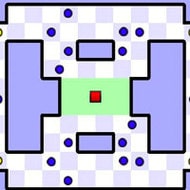

Worlds Hardest Game 3 represents the evolution of challenge-based gameplay, transforming frustration into a rewarding journey of skill acquisition. The game’s sophisticated systems ensure that every death provides meaningful feedback rather than feeling arbitrary. Players develop genuine expertise through layered learning systems that reinforce fundamentals while introducing complex new mechanics. This installment features revolutionary “dynamic challenge scaling” that automatically adjusts difficulty based on real-time performance metrics, creating a perfectly balanced experience for all skill levels.
Beneath its simple surface, Worlds Hardest Game 3 operates complex mechanics:
Top players approach Worlds Hardest Game 3 with specific mindsets:
The genius of Worlds Hardest Game 3 lies in its ability to make players enjoy failing. Each attempt feels like progress rather than regression due to the game’s sophisticated teaching methods. Players unknowingly develop advanced cognitive skills like parallel processing and predictive analysis that translate beyond the game itself. This creates an experience that’s simultaneously punishing and rewarding, frustrating and exhilarating – the ultimate test of digital skill.
Dedicated players have developed sophisticated approaches: